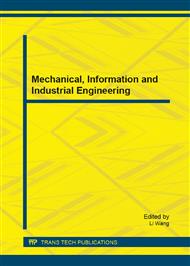p.154
p.161
p.165
p.171
p.175
p.180
p.186
p.191
p.196
The Control Strategy of Yaw Moment for Rear Electric Motor Drive Vehicle
Abstract:
With the maturing of in-wheel motor technology, Control on vehicle longitudinal and lateral stability have a rapid development, vehicle with in-wheel motor have also made considerable progress. The paper conducts a study on control strategy of electric vehicle with two in-wheel motors mounted on rear wheels. Yaw moment adopt target following algorithm based on two degrees of model of monorail and study the allocation of torque on two driving wheels. The study indicates that ESP control strategy in which yaw moment of left and right wheel is different and the way of allocating torque based on utilization adhesion can improve vehicle handling ability.
Info:
Periodical:
Pages:
175-179
Citation:
Online since:
March 2015
Authors:
Price:
Сopyright:
© 2015 Trans Tech Publications Ltd. All Rights Reserved
Share:
Citation:


